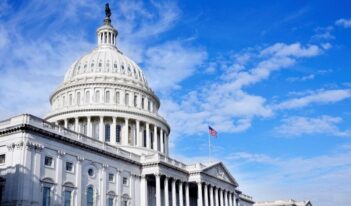
The Department only seems to use its compromise power in a very narrow set of cases, but there are signs that the zeitgeist may be shifting.
When it was first given the power to issue and collect student loans in 1958, the U.S. Department of Education also received the power to “compromise, waive, or release any right” to collect on them. And when the Higher Education Act of 1965 made student loan authorities permanent, it solidified their power to compromise.
As far as I can tell, nothing in current law prevents the Department from using its compromise authority to cancel broad swaths—or even all—of its student loan portfolio. Other federal agencies have to comply with the Federal Claims Collection Standards in determining when and how to settle claims, but the Department does not—at least when it comes to student loans.
Unlike most other agencies’ compromise authority and unlike its own compromise authority with regard to other claims, which are derived from the Federal Claims Collection Act of 1966 (FCCA), the Department was given its student loan compromise authority before the FCCA was passed. And that statute explicitly provided that “[n]othing in this Act shall…diminish [an agency’s] existing authority to settle, compromise, or close claims.” In its current regulations governing its compromise powers, the Department explicitly acknowledges that student loan powers are independent of its other compromise powers.
It is true that the 2008 Higher Education Opportunity Act limited the Department’s student loan compromise power, but these limits are almost meaningless. According to the statute’s amendments, the “Secretary may not enter into any settlement of any claim [regarding student loans] that exceeds $1,000,000 unless (1) the Secretary requests a review of the proposed settlement of such claim by the Attorney General; and (2) the Attorney General responds to such request.” Even assuming that some borrowers have student loans totaling more than one million dollars, the only real limit on the Department would be to consult the U.S. Attorney General with regard to those specific loans.
Currently, the Department only seems to use its compromise power in a very narrow set of cases, as an absolute last resort for chronically defaulted borrowers who present minimal prospect of repayment rehabilitation. But as we have seen with defense to repayment and closed school discharges, the Department’s own implementation of its powers cannot be taken as a guide to those powers’ limits. To keep its budget in the black, the Department has used creative (and suspect) interpretations of borrower defense and closed school discharge laws to create arbitrary barriers for their use.
Absent some as-of-yet undiscovered limitation, the only blockade to the Department’s cancelling or writing down huge amounts of student loan debt is political will. Given the discussion so far, this barrier should not be sneezed at: the Department currently views itself as a debt collector above all else when it comes to student loans. Foregoing collections would directly contradict the core of this self-image. As well, budget hawks outside the Department—those in and outside government alike—share the notion that shoring up the budget by collecting on student loan debt would be better than eliminating its burdens.
In the Democratic party, there are signs that the zeitgeist may be shifting. Student debt played a major role in the Democratic primary, and Bernie Sanders, Keith Ellison, and Elizabeth Warren—three of the most outspoken elected officials on student debt, have gained new power in the party. Hillary Clinton’s platform for higher education reform included a little-discussed item. “Hillary will take immediate executive action,” declares her website, “to offer a three-month moratorium on student loan payments to all federal loan borrowers.” Her website does not discuss the authority she would use to take this action, but it is hard to see how she could do it in any way but by invoking the Department of Education’s compromise power. And once that power is invoked for a moratorium, it becomes easier to justify invoking it for write-downs and cancellations.
The future of the Republican party, with Donald Trump at its head, is less certain. The movement conservative and lobbyist-bought wings have long favored increasing the profits of private investors in student loans. At times President-elect Trump has echoed this wing proposing, for instance, to eliminate the Department of Education, but at other times he has expressed a concern about student debt burdens. And the very language of “compromise and settlement” seems to echo his vision of himself as a dealmaker.
The battles will become starker, it seems. No matter how it shapes up, if policymakers begin to confront the burdens created by mountains of student debt, they should understand just how far they are currently permitted to go. They should not let administrative officials with antithetical goals narrow their horizons with opaque legal interpretations. Sometimes, the beginning of a shift in political will comes from the realization that existing law contains more political possibilities than generally acknowledged.
This essay is part of a four-part series, The Department of Education’s Power to Cancel Student Debt.




